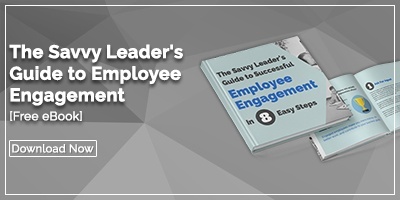 If you’ve been tasked with introducing the Hoshin Kanri strategy deployment methodology to your organization, and you are like many of our other clients, you might be at a loss for what to include in the training materials. Organizations don’t roll out a new strategic planning method every day, so we are often asked how to go about bringing everyone up to speed. Of course, you’ll need to tailor your instruction to your organization, but the following elements are a good place to start.
If you’ve been tasked with introducing the Hoshin Kanri strategy deployment methodology to your organization, and you are like many of our other clients, you might be at a loss for what to include in the training materials. Organizations don’t roll out a new strategic planning method every day, so we are often asked how to go about bringing everyone up to speed. Of course, you’ll need to tailor your instruction to your organization, but the following elements are a good place to start.
What is Hoshin Kanri and Why Are We Using It?
Most of your employees are probably not familiar with the Hoshin Kanri approach. In fact, many of them will have never participated in strategy development before. Therefore, it is essential to start with the basics and introduce your team to Hoshin Kanri and strategy deployment as concepts.
Be sure to explain that the Japanese word Hoshin means “direction” or “compass needle” and Kanri means “control” or “management.” This reflects the intention of the technique to let the strategic goals of the organization guide every decision and action. We recommend introducing the idea of “true north” as a way to get everyone aligned and working toward the same strategic goals and moving in the right direction. We recommend referring to some of the other names that are used for Hoshin Kanri including policy deployment, strategy deployment, and Hoshin planning.
Outlining the reasons that your organization has chosen the Hoshin Kanri approach is equally important. For most organizations this includes:
• Better communication
• Improved decision making
• Broader engagement
• Early warning of the need for course correction
• Valuable performance insight
The 5 Principles of Hoshin Kanri
Anytime a new management technique is introduced, employees can be concerned about how it will impact them and whether it will be used as a stick, rather than a carrot. It is wise to address this front and center in your Hoshin Kanri training materials by introducing the five principles of the approach:
1 – Objectives are communicated
Hoshin Kanri is above all a structure for communication around the strategy. This is a benefit to all employees because when the goals are clear, decision making and resource prioritization are simplified. Employees should be assured that strategic planning won’t be a one-time event, but instead will be an ongoing, constantly present conversation.
2 – Understanding the current state is essential
The early part of the Hoshin planning process involves gaining a deep understanding of the current state. Employees should be instructed that this is not done to judge individual performance, but rather to set realistic goals and create a baseline for improvement.
3 - Widespread engagement
Unlike other strategy development approaches, Hoshin Kanri embraces the fact that everyone in the organization should have some stake in the outcome of strategic planning. Therefore, each individual’s goals should be in alignment with the organization’s overall objectives. They should acutely understand how their work propels the company toward true north.
4 – Focus
Hoshin objectives are usually limited to just a few breakthrough goals that will have a significant impact on the future of the organization. During your Hoshin training, it is helpful to explain why every “to do” isn’t considered strategic and that the Hoshin model allows for managing the long-term strategy as well as day-to-day improvement efforts.
5 – Measurement
The Hoshin approach is not “set it and forget it.” Just like driving a car, to get to the expected destination, many elements are present on the dashboard. Employees should be prepared for the fact that progress will be measured on a daily basis and introduced to any tools such as X-matrix, KPI charts, and Kanban boards that will be used to visualize progress.
The 7 Steps of Hoshin Planning
One important goal of your Hoshin Kanri training materials is to make sure that everyone knows exactly what to expect. You’ll want to lay out the steps your organization will use for implementation and ongoing management. Your plan may vary, but the typical stages of Hoshin planning are:
1 - Establish the Vision and Assess the Current State
2 - Develop Breakthrough Objectives
3 - Define Annual Objectives
4 - Cascade Goals Throughout the Organization
5 - Execute Annual Objectives
6 - Monthly Reviews
7 - Annual Review
If at the end of the training, each employee understands what Hoshin Kanri strategy deployment is, why it is being implemented, and how it will work, then you can consider your program a success. Of course, there will be questions and unexpected things that come up, so be sure to collect any feedback that could make your materials even more valuable as new employees are added.
![[Watch Now] Cascading Strategy Through Hoshin Kanri](https://no-cache.hubspot.com/cta/default/326641/dd5ad176-fb74-4e1e-bf28-ff4d966d1701.png)



Add a Comment